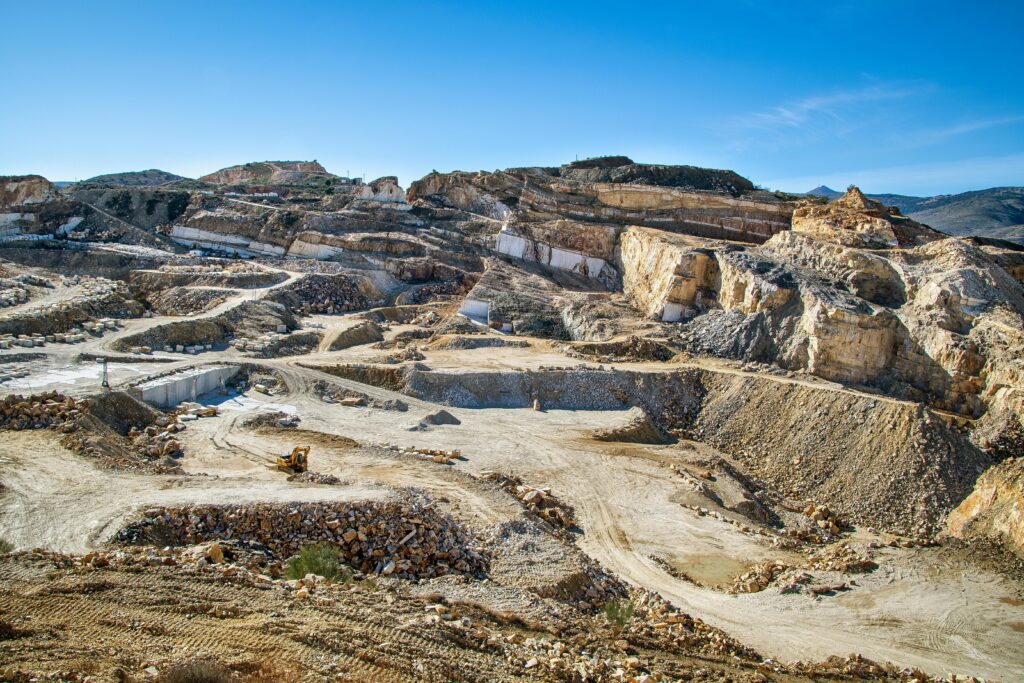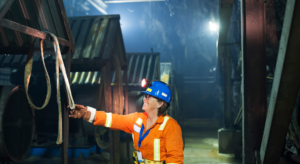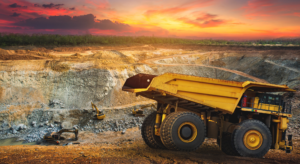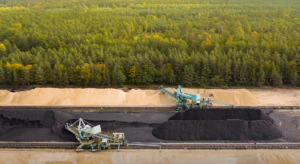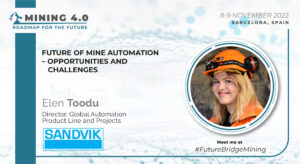Virtual reality (VR) is being used as an innovative technological solution for addressing the main safety concerns in mining. With the risks of the workplace on the rise, immersive training technologies offer unparalleled possibilities for full skill development and risk reduction. Furthermore, modern mining companies are pioneering innovative approaches to worker preparation. They are employing VR’s exclusive capability to create safe, realistic training environments. This article dives into the transformative potential of virtual reality in changing safety training. It shows how cutting-edge technologies are impacting the workforce development in one of the most demanding industries in the world.
Revolutionizing Risk Mitigation Through Immersive Training
VR is becoming increasingly popular due to the way it radically alters the approach to mining companies’ safety training. It creates access to riskless training. It simulates complex operational environments and enables workers to develop crucial skills and decision-making abilities. All this without being exposed to dangerous terrain. Let us take a closer look at it:
Underground Hazard Simulation Techniques
Virtual reality simulation of underground mining conditions utilizes advanced geospatial mapping and computer model technologies. It integrates LiDAR scanning, geological survey data, and a real-time structural analysis algorithm. These help VR platforms develop hyper-realistic underground environments. Moreover, these virtual environments can precisely represent rock strata, potential fault lines, and complex geological features. This enables miners to practice navigation and risk management in precise virtual landscapes. Additionally, trainees can engage with dynamically simulated underground situations. Thus, they can experience potential hazard reactions without exposure to hazardous situations.
Emergency Response Training Protocols
Immersive virtual reality emergency training incorporates sophisticated scenario generation algorithms. These generate intricate, unforeseen crises. Furthermore, advanced physiological monitoring technologies track the stress responses, heart rate, and decision-making processes in simulated emergencies of the trainee. Moreover, ML algorithms analyze individual and team performance. It creates a composite measure of overall performance that is capable of detecting the key skills deficiency. These simulations also mimic complex rescue situations. It includes equipment malfunctions, structural failures, and medical issues. Thus, it provides miners with high-fidelity training experiences to enable them to establish key rapid response abilities.
Equipment Interaction and Operational Scenarios
The latest VR platforms leverage sophisticated haptic feedback and motion tracking technologies. It provides ultra-realistic equipment interaction simulations. In addition, accurate virtual models of mining equipment enable learners to simulate complex operational procedures with accuracy within a millimeter. Also, computational physics engines reproduce realistic equipment behaviors. They encompass mechanical stress, material interactions, and environmental influence. These simulations also give end-to-end training experiences that build muscle memory, technical knowledge, and operating skills on a range of mining equipment and adverse working conditions. It is one of the top ways in how VR enhances safety training in mining.
Psychological Safety Preparedness Strategies
Neuropsychological studies power VR training innovation. It tackles intricate mental health issues in stressful mining conditions. Furthermore, sophisticated simulation tools combine biometric feedback, stress response monitoring, and cognitive load measurement. This develops focused psychological training sessions. Such platforms assist employees in developing emotional strength and mental resilience by meticulously constructed scenarios that test cognitive as well as emotional skills. Through constant exposure to regulated high-pressure situations, virtual reality constructs holistic psychological readiness for extreme workplace demands.
Technological Integration and Advanced Training Methodologies
Amazing technologies are coming together to develop the next generation of mining safety training solutions. This section walks through how the sophisticated digital technologies are bringing a transformation in skill development and risk reduction in the mining sector:
Quantum Computing in Training Optimization
Quantum computing technologies are revolutionizing VR safety training simulation capabilities. It is developing unparalleled computational complexity in scenario modeling. These sophisticated systems can handle several training variables at a time. This generates conditions that change in real time to match trainee interaction. By utilizing quantum algorithms, mining firms can design infinitely complex environments that push conventional computational boundaries. The outcome is a quantum improvement in the sophistication of training. It also opens up to more detailed safety readiness measures.
Sustainable Technology Infrastructure Design
Virtual reality training platforms are expanding to meet key sustainability challenges in technology infrastructure. In addition, sophisticated systems now have full lifecycle analyses. This examines the environmental footprint of training technologies. This is from development through implementation. Additionally, these platforms maximize energy use, minimize digital waste, and establish circular technology environments. These are aligned with international sustainability standards. By leveraging renewable energy and carbon monitoring systems, mining operations can create training solutions that are both green and technologically superior. It is one of the finest ways in how virtual reality safety training for miners is provided.
Cybersecurity in Immersive Learning Platforms
Modern VR safety training solutions now come with advanced cybersecurity frameworks. It secures sensitive operational information and maintains the integrity of the training platform. Additionally, these systems incorporate blockchain technologies, advanced encryption protocols, and ML-based threat detection. It helps create secure and tamper-resistant training environments. Therefore, mining businesses can safeguard their valuable intellectual property with these complete digital security measures. They can also ensure data privacy and reduce the possibility of cyber threats that accompany sophisticated training technologies.
Global Knowledge Standardization Mechanisms
Virtual reality is leading the creation of entire global knowledge standardization systems for mining safety training. Such superior platforms develop global training protocols that cut across geographic and organizational locations. In addition, with smart knowledge transfer facilities, mining enterprises can ensure standardized safety practices. They can enable global collabs. and set up an environment of adaptive learning that adapts to emerging world challenges. Lastly, the approach demonstrates a revolutionary rethinking of how technical know-how is generated, shared, and implemented within complex industrial setups.
Future Horizons of Virtual Reality in Mining Safety Training
New technologies are expanding the frontiers of safety training. It holds the promise of an even more advanced method when it comes to developing the workforce. This section explores the possible future innovations that will revolutionize the way mining companies train their employees:
Climate Adaptation Training Protocols
Virtual reality training systems are advancing to incorporate in-depth climate change simulation scenarios particular to mining environments. These sophisticated platforms will simulate intricate ecological changes. It assists miners in formulating coping strategies for hostile environmental conditions. By simulating hyper-realistic situations involving geological instability, availability of resources, and volatile meteorological phenomena, VR technologies enable workers to gain strategic resilience. Additionally, training modules will be equipped with predictive climate modeling. It enables miners to comprehend and prepare for future long-term operating issues that are inspired by the worldwide changes in the environment.
Biomimetic Training Design Principles
Emerging training approaches are finding inspiration from nature’s adaptive systems. It is adopting biomimetic design principles that imitate biological learning processes. In addition, such techniques decipher intricate organizational learning models that are observed in natural environments. It converts them into sophisticated training architectures. Moreover, VR safety training platforms are also able to design more intuitive and responsive learning environments by examining how biological systems build resilience, manage complexity, and maximize the use of resources. These learning environments can adjust dynamically to skill growth needs in individuals and groups.
Emergent Sensory Integration Technologies
Sophisticated sensory integration technologies are revolutionizing immersive training experiences. It is developing multi-dimensional perceptual learning environments. These advanced platforms integrate haptic feedback, neurological response monitoring, and sophisticated visualization technologies to provide unparalleled training interactions. By tracing the sensory responses and developing adaptive feedback systems, these technologies produce learning experiences that transcend conventional training limits. It also allows workers to acquire more sophisticated operational capabilities through immersive and multisensory engagement.
Interdisciplinary Knowledge Transfer Mechanisms
Virtual reality is facilitating amazing cross-disciplinary knowledge transfer in mining safety training. Through the development of sophisticated simulation platforms, organizations can bring together knowledge from psychology, neuroscience, and human factors design. Furthermore, such a sophisticated learning ecosystem enables professionals with different backgrounds to come together and create a better training approach. Additionally, the method entails creating dynamic learning spaces that can synthesize knowledge from various scientific disciplines. This leads to more integrated and comprehensive strategies in the areas of workforce development and safety readiness.
To Sum Up
Virtual reality is potent in revolutionizing safety training within the mining sector. It provides phenomenal scope for risk avoidance and skill building. As these technologies are on an upward trend, VR will become an increasingly crucial element of workforce preparation. If you want to know about such advanced technologies, latest insights, & case studies, do not miss out on the 7th Mining 4.0 Summit. It takes place in Toronto, Canada, on April 29-30, 2025. It also offers an excellent chance to network with top industry players and pioneer technological growth in mining.

